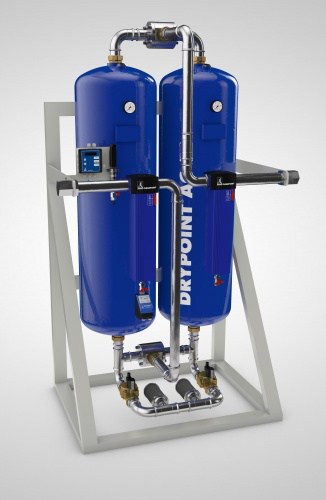
Beko Technologies has launched the latest range of the Drypoint AC compressed air adsorption dryers. These models come in 10 different sizes for volumetric flow rates from 100 to 1,000m³/h and operating pressures from 4- to 16-bar (gauge). The cold-regenerated adsorption dryers extract moisture from the compressed air to a pressure dew point of -40°C.
The cold-regenerated Drypoint AC adsorption dryers ensure a continuous supply of high-quality air. They are equipped with an efficient compressor synchronisation controller as standard, saving energy. If the compressor is not running, the dryer is also shut down, preventing unnecessary air purging.
The containers of the Drypoint AC are filled with activated alumina desiccant. The shuttle valve with an internal purge air line allows for an adequate air flow even in the event of a power failure, making the system fail-safe. Sturdy galvanised press fittings, easy transport by means of a lift truck and access to all system components show that the unit has been designed with practicability in mind. The regeneration air flow is determined by the operating pressure and cannot be adjusted. The regeneration air is released through top quality silencers to the ambient air.
The dryer is shipped with a fully mounted Clearpoint prefilter to remove solid and liquid contaminants. The Clearpoint afterfilter ensures that the downstream compressed air system cannot become contaminated with desiccant abrasion residue. The condensate is drained off through a Bekomat. The Drypoint AC is easy to operate.
Apart from the standard models, the dryer can be customised for pressure dew points of as low as -70°C. For such units, the air is dried by molecular sieves. The Drypoint AC can be upgraded with a pressure dew point control system that includes Metpoint sensor technology from Beko, reducing energy consumption even further.










Water Sector Talent Exodus Could Cripple The Sector
Maybe if things are essential for the running of a country and we want to pay a fair price we should be running these utilities on a not for profit...